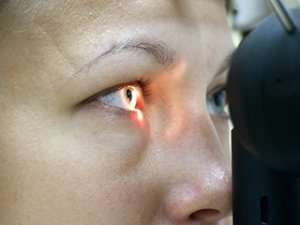


High Order Aberrations
In an ideal world, everyone would have perfectly-shaped eyes. The reality, however, is that practically every eye has some form of aberration somewhere in it. These aberrations may or may not cause vision problems, but don’t be too surprised if your eye doctor...
Ocular Migraine
The name conjures up pain, but ocular migraines are less about headaches and more about a vision problem. Ocular migraines are temporary visual disturbances that can last up to 30 minutes. This condition can affect one eye or both eyes simultaneously. An ocular...
Myopia (Nearsightedness)
Myopia, commonly called nearsightedness, is a refractive error of the eye, meaning that the shape of the eye or its cornea improperly bends light as it enters the eye. This hinders your ability to focus. Myopia is the most common refractive error of the eyes, and is...
Amblyopia
Amblyopia, commonly called lazy eye, refers to the improper development or significant loss of vision in an eye. It occurs when the brain does not acknowledge the images seen by the amblyopic eye. Amblyopia Causes Amblyopia occurs when an individual cannot use...

